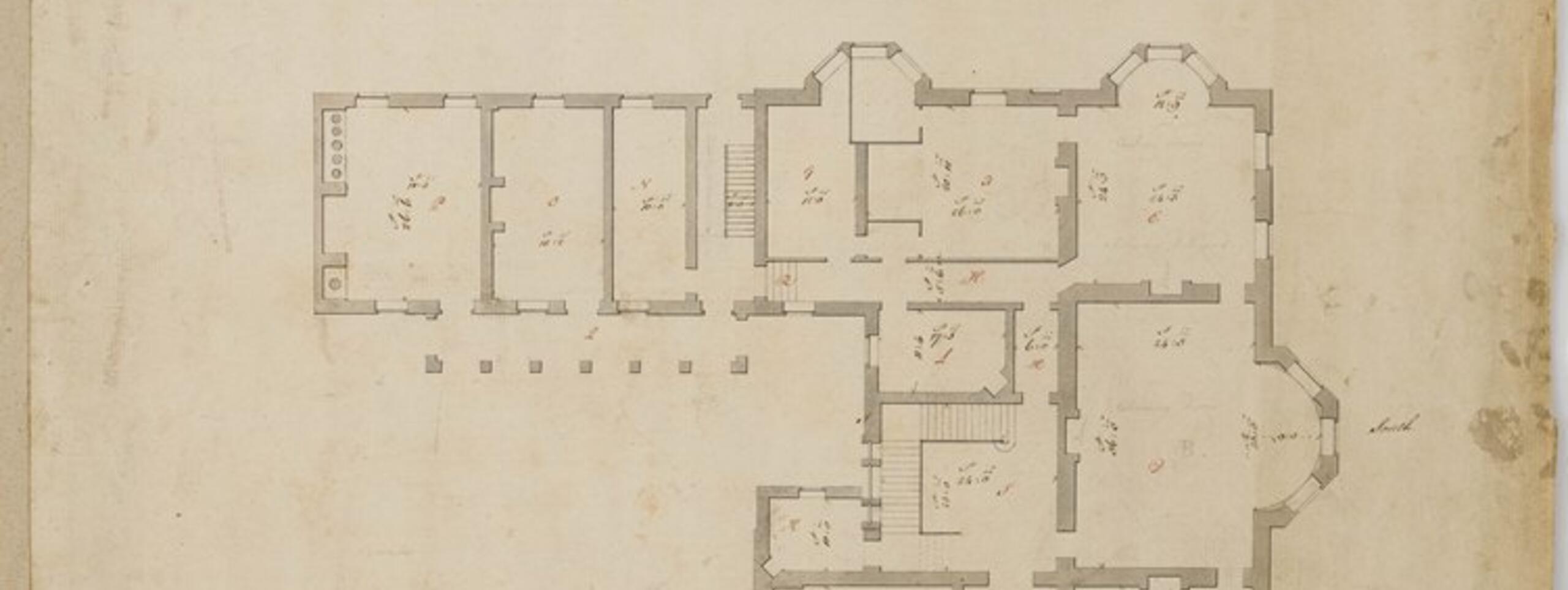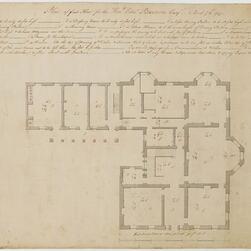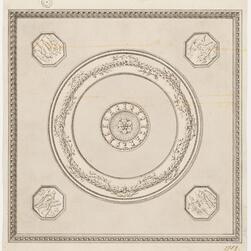To coincide with our current exhibition Building a Dialogue: The Architect and the Client, our curatorial team will examine the themes and objects in the show through a series of blog posts. In this first post, Frances Sands considers how building commissions were secured.
During the Georgian period there were a number of different ways for an architect to earn a building commission. Competitions, speculative designs and professional networking were all common. Alternatively, an architect might supplant an opponent. Robert Adam displaced other architects at several commissions, for example when he took over from Stiff Leadbetter at Hatchlands, Surrey. In 1756-57 the Rt Hon. Edward Boscawen and his bluestocking wife Fanny employed Leadbetter to rebuild their Tudor mansion at Hatchlands. A year later, Leadbetter was replaced by Adam who provided interior decorative schemes for the newly built shell. Leadbetter’s 1757 survey plan of the house was annotated in faint pencil by Adam when he made preliminary designs for the ceilings of his predecessor’s rooms.
Further to this, there are extant within the Soane Museum collection scaled and washed designs of 1759 for these exact ceilings, showing Adam’s preliminary annotations in greater detail. One example is seen in the south-west corner of Leadbetter’s plan: in the lesser dining parlour. Here Adam annotated a rough design for a ceiling composed of a large circular band framed by four octagonal compartments. The corresponding worked-up design by an Adam office draughtsman makes use of the same arrangement, albeit including additional ornamental detail. Unfortunately, the executed ceiling collapsed in c.1860 but one of a similar design survives on the first floor of the house.


